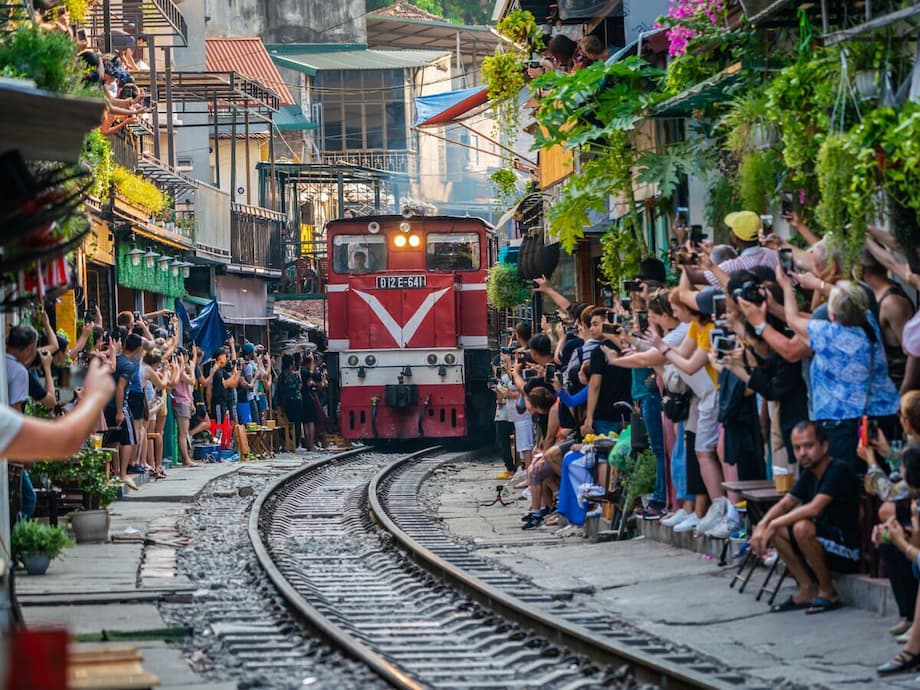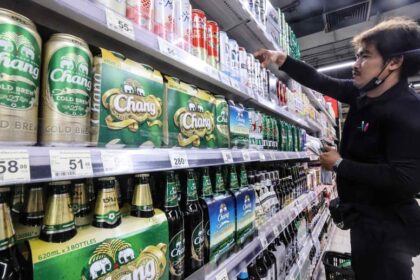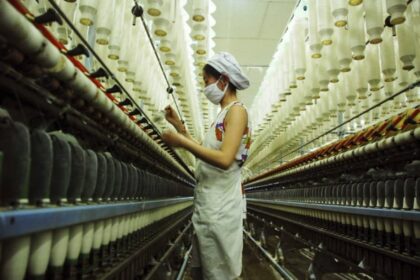Why Hanoi’s Train Street Captivates – and Endangers – Tourists
In the heart of Hanoi’s Old Quarter, a narrow railway track slices through a bustling neighborhood of cafes and homes. Here, tourists from around the world gather for a singular thrill: sipping coffee or snapping selfies just inches from a passing train. The so-called “Train Street” has become one of Vietnam’s most iconic – and controversial – attractions, drawing crowds despite repeated government crackdowns and mounting safety concerns.
- Why Hanoi’s Train Street Captivates – and Endangers – Tourists
- The Origins and Transformation of Train Street
- Safety Concerns and Government Crackdowns
- Why Tourists Keep Coming Back
- Local Adaptations: Balancing Business and Safety
- Incidents and Near Misses: The Real Dangers
- Scams and Safety Tips for Visitors
- The Economic and Cultural Impact
- Global Attention and the Future of Train Street
- In Summary
What makes Train Street so irresistible? For many, it’s the adrenaline rush of standing close to a colonial-era locomotive as it rumbles past at just 10 kilometers per hour. For others, it’s the chance to capture a viral photo or video, fueled by social media’s insatiable appetite for unique travel experiences. Yet beneath the excitement lies a persistent tension between economic opportunity, public safety, and the preservation of local life.
The Origins and Transformation of Train Street
The railway that runs through Hanoi’s Train Street dates back to 1902, built by French colonial authorities to connect the capital with other major cities. Over the decades, working-class Hanoians constructed homes and businesses in the narrow corridor beside the tracks, adapting their daily routines to the train schedule. For generations, families timed meals, chores, and playtime around the trains, with no safety rails or tourism campaigns – just community ingenuity and caution.
In recent years, the area has undergone a dramatic transformation. Once a neglected slum, Train Street is now a vibrant hub of cafes, shops, and street life. Social media has played a pivotal role in this metamorphosis, with travelers sharing dramatic images and videos of trains passing within arm’s reach of patrons. The result: a surge in international visitors and a new economic lifeline for local residents.
As one cafe owner told reporters, “Tourism has transformed the area into a cleaner, nicer, and safer place. We should never try to close streets down, instead, making full use of them and turning them into a distinctive feature to promote tourism.”
Safety Concerns and Government Crackdowns
Despite its popularity, Train Street is fraught with danger. The proximity of tables, chairs, and crowds to the active railway presents a constant risk of accidents. Authorities have repeatedly warned that the area does not meet safety standards, and several near-misses have underscored the peril. In one widely circulated video, a tourist filming on his phone slipped and fell toward a moving train, only to be pulled to safety by bystanders. The incident left onlookers shaken and reignited calls for stricter enforcement.
Officials have responded with a series of crackdowns. In 2019, after several incidents involving tourists on the tracks, authorities ordered the closure of businesses operating within the railway safety corridor. Barricades and warning signs were installed at major entry points, and police began conducting surprise inspections, forcing hundreds of tourists to leave the area at a time. The Hanoi Department of Tourism has repeatedly instructed travel agencies to stop organizing tours to Train Street, aiming to protect visitors and maintain public order.
Yet enforcement remains inconsistent. Many cafes continue to operate, especially in less-monitored sections, and tourists often find ways to access the tracks despite checkpoints. As one local tour guide explained, “When the authorities arrive, the shops close and customers disperse. Once the authorities leave, everything returns to normal.”
Why Tourists Keep Coming Back
The allure of Train Street is undeniable. For many visitors, the experience is a highlight of their trip to Vietnam. Helena Bizonova, a tourist from Slovakia, described the moment as “adrenaline because the train was so close,” adding, “It’s something I will never experience in my life again.”
Tourists are drawn not only by the thrill but also by the unique blend of local culture and history. The lantern-adorned tracks, the aroma of Vietnamese coffee, and the sense of community all contribute to the street’s magnetic appeal. Social media amplifies this effect, with countless posts and videos showcasing the spectacle to a global audience.
Similar “train streets” exist in Thailand and Taiwan, but Hanoi’s version is especially famous for its intimacy and authenticity. The area offers a rare glimpse into daily life in the Vietnamese capital, where the old and new collide in dramatic fashion.
Local Adaptations: Balancing Business and Safety
Faced with official scrutiny and the realities of operating beside an active railway, local businesses have adapted in creative ways. Many cafes now display train schedules on chalkboards, post warning signs, and employ staff to usher guests to safety when a train approaches. In the busiest sections, visitors are often required to be escorted by a cafe owner and must follow strict instructions to clear the tracks in time.
Some sections of Train Street are quieter and less crowded, offering a more relaxed experience. The Le Duan side, for example, is known for its family-run cafes and slower pace. Here, the focus is on enjoying coffee and conversation rather than jostling for the perfect photo.
Despite these efforts, the risks remain. The legal safety corridor requires a minimum distance of three meters from the tracks, but many establishments place tables and chairs just centimeters away. Tourists often ignore warning signs and crowd onto the tracks for selfies, especially during peak hours when trains are scheduled to pass.
Incidents and Near Misses: The Real Dangers
While no recent fatalities have been reported, several serious incidents have highlighted the dangers of Train Street. In one case, a South Korean tourist was struck by a train while taking photos but survived with minor injuries. More recently, a video went viral showing a man almost being dragged under a moving train while trying to capture the moment on his phone. Such incidents have prompted renewed calls for stricter enforcement and public education on safety.
Authorities have responded with increased inspections and fines for businesses operating illegally within the railway corridor. Police regularly remind residents and tourists to avoid gathering, drinking, or taking photos near the tracks. In cases of deliberate violations, official reports are filed and written commitments are required to prevent repeat offenses.
Despite these measures, the challenge of balancing safety with the economic benefits of tourism persists. As one Hanoi resident put it, “After incidents like this, we can’t wait for tragedy before taking action.”
Scams and Safety Tips for Visitors
Beyond the obvious physical dangers, tourists should be aware of common scams and pitfalls on Train Street. Some individuals may attempt to charge an entrance fee, but entry is officially free. Others may pressure visitors to patronize a specific cafe, though supporting local businesses by buying a drink is customary and appreciated. In rare cases, imposters posing as police have asked tourists for money; genuine security personnel do not solicit payments and are easily identified by their uniforms.
To stay safe, visitors should:
- Only visit Train Street with a reputable cafe or guide who knows the train schedule
- Follow all instructions from cafe staff and move well away from the tracks when a train is approaching
- Never stand or sit on the tracks for photos, especially during scheduled train times
- Avoid visiting during peak hours if crowds make it difficult to move quickly
- Be wary of anyone demanding money for entry or posing as an official without proper identification
The Economic and Cultural Impact
For many local residents, Train Street represents more than just a tourist attraction – it’s a vital source of income and a symbol of Hanoi’s resilience. The influx of visitors has transformed a once-blighted area into a lively, prosperous neighborhood. Cafe owners argue that tourism has made the street cleaner and safer, and that closing it would devastate the community.
Yet the economic benefits come with trade-offs. Over-tourism has led to crowding, noise, and occasional conflicts between residents and visitors. The government faces a difficult task: how to preserve the unique character of Train Street while ensuring the safety of all who visit and live there.
Some experts and tourism insiders have called for a compromise, suggesting that Train Street be officially designated as a tourist attraction with regulated access, clear safety protocols, and proper infrastructure. Others warn that any solution must respect the needs and wishes of local residents, who have adapted to life beside the railway for generations.
Global Attention and the Future of Train Street
The fascination with Train Street has attracted international media coverage and inspired similar attractions in other countries. Yet Hanoi’s version remains unique for its blend of history, culture, and everyday life. As Vietnam moves forward with plans to modernize its railway infrastructure, including a proposed $67 billion high-speed rail project, the fate of Train Street hangs in the balance.
For now, the street endures as a symbol of Hanoi’s dynamic spirit – a place where old and new coexist, and where the thrill of adventure meets the realities of urban life. Whether Train Street can continue to thrive without tragedy will depend on the willingness of all stakeholders – tourists, residents, businesses, and authorities – to find common ground.
In Summary
- Hanoi’s Train Street is a globally famous tourist attraction where trains pass within inches of cafes and crowds
- The area has transformed from a slum to a vibrant hub, thanks to tourism and social media
- Authorities have repeatedly tried to close or restrict access due to serious safety concerns and near-miss incidents
- Local businesses have adapted with safety measures, but enforcement is inconsistent and risks remain
- Tourists are advised to follow safety instructions, avoid scams, and respect local residents
- The debate continues over how to balance economic benefits with public safety and community needs
- Train Street remains a unique symbol of Hanoi’s culture, history, and resilience, but its future is uncertain












